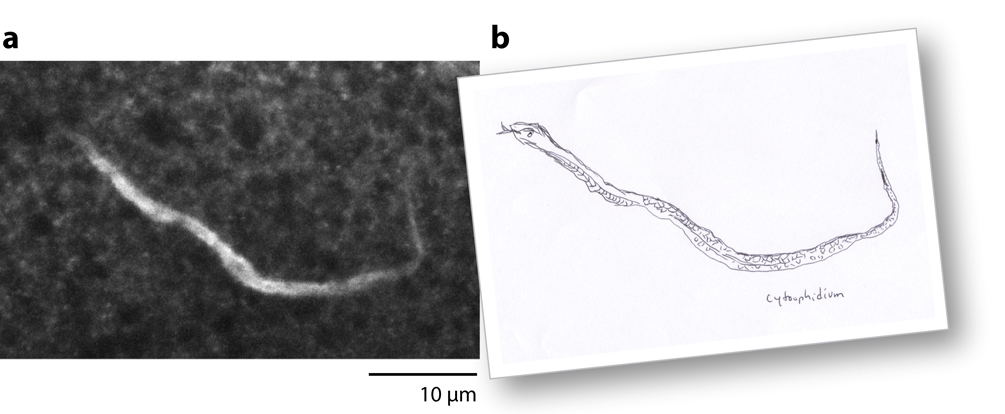AnnuRev Cellbio:上海科技大学刘冀珑教授发表“细胞蛇”综述
近日,细胞和发育生物学权威综述杂志《Annual Review of Cell and Developmental biology》上在线发表了上海科技大学生命学院刘冀珑教授题为"The Cytoophidium and Its Kind: Filamentation and Compartmentation of Metabolic Enzymes" (细胞蛇和它的同类:代谢酶的纤维化和区域化)的长篇综述。
分子的区域化是生命系统区别于非生命系统的一个重要特征。生物分子在细胞内的区域化是细胞赖以存活的根本特质之一。2010年,刘冀珑教授的团队发现在核苷酸代谢发挥关键作用的CTP合成酶可以在果蝇细胞中形成细长的蛇形结构,遂将之命名为“细胞蛇”(cytoophidium,复数cytoophidia),源自希腊语“cyto”(细胞)和“ophidium”(蛇)。与传统的由膜包裹的细胞器(如线粒体、高尔基体等)不同,细胞蛇是没有膜的细胞器。同年稍后,美国两个小组独立地报道在细菌和芽殖酵母细胞中发现类似细胞蛇的结构。次年,刘教授的团队和另一个美国团队独立地在人类细胞里发现细胞蛇。细胞蛇普遍存在于从细菌到人的细胞中,说明细胞蛇是进化中高度保守的细胞器。由于很多代谢酶在特定条件下均可组装成细胞蛇,探索细胞蛇的结构和功能已成为细胞生物学研究的最新前沿领域之一。
在这篇综述里,刘冀珑教授回顾CTP合成酶的研究历史,总结最近几年对细胞蛇的初步认识,并提出细胞蛇相关术语的定义。以含有CTP合成酶的细胞蛇为例,他首先系统阐述细胞蛇的进化保守性、形态、组成、动态、组装和发生。他还推测细胞蛇的可能的生理功能以及与疾病的潜在联系。其次,他比较两个核苷酸代谢酶(CTP合成酶和IMP脱氢酶)的异同和形成的不同的细胞蛇之间的相互关系。最后,他探讨了代谢酶纤维化成细胞蛇和同类结构对代谢调控的可能意义。

细胞蛇:细胞里的蛇。左图是在显微镜下拍摄的果蝇细胞中细胞蛇的最早图片之一。右图是左图中细胞蛇的艺术想象。

细胞蛇可能的生物学功能。
原文链接:
The Cytoophidium and Its Kind: Filamentation and Compartmentation of Metabolic enzymes
原文摘要:
Compartmentation is essential for the localization of BioLogical processes within a cell. In 2010, three groups independently reported that cytidine triphosphate synthase (CTPS), a metabolic enzyme for de novo synthesis of the nucleotide CTP, is compartmentalized in cytoophidia (Greek for “cellular snakes”) in bacteria, yeast, and fruit flies. Subsequent studies demonstrate that CTPS can also form filaments in human cells. Thus, the cytoophidium represents a new type of intracellular compartment that is strikingly conserved across prokaryotes and eukaryotes. Multiple lines of evidence have recently suggested that polymerization of metabolic enzymes such as CTPS and inosine monophosphate dehydrogenase into filamentous cytoophidia modulates enzymatic activity. With many more metabolic enzymes found to form the cytoophidium and its kind, compartmentation via filamentation may serve as a general mechanism for the regulation of metabolism.
DOI: 10.1146/annurev-cellbio-111315-124907
作者:刘冀珑

